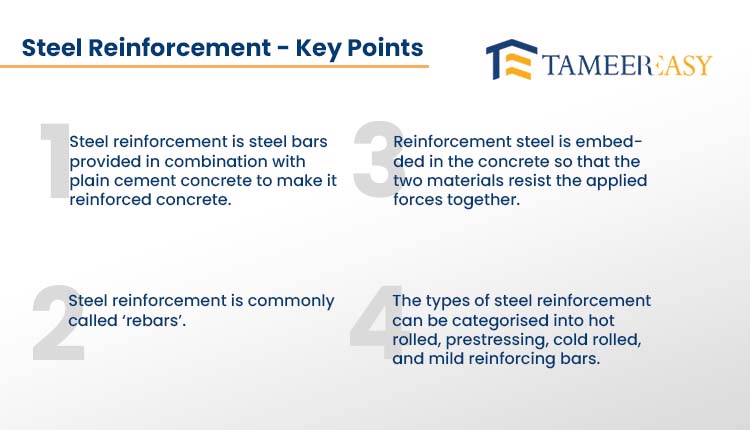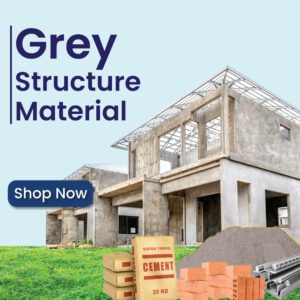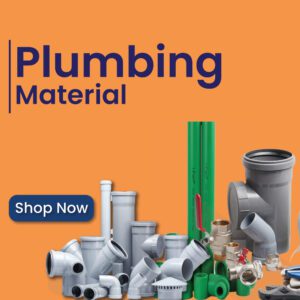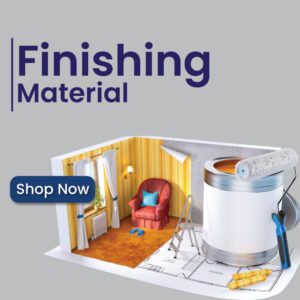Many people are unaware of the complexities involved in choosing and properly fixing reinforcement, even though everyone knows that the strength of a house’s construction greatly depends on the quality of its reinforcement. Questions arise regarding the need for reinforcement, the best locations and methods for placing it, and the many available reinforcement forms.
Visit TameerEasy Store to Purchase Quality Construction Items
Everyone wants to know the answers to these questions since they can considerably improve the quality of a house’s construction by mastering reinforcing procedures. But not everyone is familiar with the solutions to these problems.
Fortunately, Tameer Easy’s platform works closely with famous engineers at each stage of development to offer thorough responses to each query. In this article, we’ll talk about reinforcement, specifically steel rebar reinforcement.

What is Steel Reinforcement?
We employ reinforcement while pouring concrete anyplace or installing lintels in houses. This application of reinforcement is referred described as “steel rebar reinforcement”. It is frequently abbreviated as “rebar” in speech.
We can refer to steel reinforcement as “rebar” rather than utilising both phrases. Our concrete constructions often use rebar in construction. It improves elasticity, durability, strength, and stability and creates tensile forces. Rebar is used to counteract tensile pressures and other factors that could cause a building to collapse.
Stell Reinforcement for Houses
Three steel-related phrases are frequently used in the market while discussing home construction:
- TMT steel
- Deformed steel
- Plain steel
Plain steel is typically not utilised in residential construction because, unlike TMT and deformed steel, it doesn’t make a strong bond with concrete when combined. Therefore, we favour using TMT or market-sourced deformed steel for residential buildings.
Difference Between Various Steel Types
The primary component that gives a house its strength is steel. We were talking about deformed steel and TMT steel. With a few minor variations, these are utilised as reinforcement in construction. The primary visual distinction between these two varieties of steel is appearance.
For instance, twisted steel is another name for TMT steel. A single steel bar, rod, or wire is twisted to develop the steel in this reinforcement. Along the length of the bar, the twist produces a spiral pattern. A much stronger bond is created by this as well as the concrete bonding.
TMT steel is usually suggested for smaller applications. However, if you look closely at deformed steel in the market, it exhibits ribs or other deformations. These elevated ribs or surface deformations on the warped steel increase bonding.
Although both steel forms can be utilised in everyday situations, deformed steel is typically used in bigger projects like bridges, dams, massive constructions, and multi-story or high-rise skyscrapers.
Understanding Steel Sizes
The size is the centre of the entire procedure. When considering sizes, TMT steel normally comes in sizes ranging from 6 to 25 millimetres. On the other hand, deformed steel can be found up to 32–33 millimetres.
Sizes more than that require a custom order. Such dimensions are not typically employed in residential structures. TMT steel is utilised while choosing the reinforcement for homes, though.
Grade 40 and Grade 60 are the two possible levels. TMT and deformed steel both contain both grades. Grade 60 denotes more strength, whilst Grade 40 denotes diminished strength.


Best Steel for Houses
When choosing reinforcement for homes, the steel’s primary feature must be reliable enough to eliminate the need for additional testing. Otherwise, we must carry out two separate laboratory tests. The ultimate strength is determined in one test, whereas yield strength is determined in the other.
Yield Strength
The yield strength often varies with the steel grade. Its yield strength, for instance, will be 60,000 pounds per square inch if it is Grade 60. The yield strength for Grade 40 will be 40,000 pounds per square inch. Tensile strength for Grade 60 is approximately 90,000 pounds per square inch, whereas tensile strength for Grade 40 is comparable.
Bend Test
The bend test, which looks at how the steel bends, is the other test that was performed. If there isn’t a lot of carbon in it, it will continue to be ductile. The bending, in this instance, is appropriate. However, if the steel has a high carbon content or is brittle, bending may cause cracks or the steel to break.
The strength and bend tests thus determine the ductility and quality of the steel. When choosing the type of steel for the long-term stability of a house, this knowledge is essential.
Why Steel is Used in Concrete
Observe how well concrete performs when compressed. It is extremely stable. On its alone, concrete doesn’t have enough tensile strength. Concrete either cracks or breaks whenever a tensile strength requirement is present.
Reinforcement is employed as a fundamental measure to prevent these cracks or breakdowns. Concrete can endure any force and remain intact thanks to the reinforcement’s added strength, stability, and flexibility.
Steel Design for Slabs
Our structural designer normally chooses the steel design for slabs based on the diameter of the bars. In residential constructions, slabs often utilise 12mm or 10mm diameter bars, whereas beams and other structural parts typically use 16mm or 20mm diameter bars.
The spacing between the bars, which specifies how far apart the bars will be set, is another example of how our designer adheres to the accepted design standards. They also consider the specifications for the formwork, including whether the bars will be set in positive or negative formwork.
What is the Positive and Negative Steel Form?
Although engineers are typically familiar with this idea, it is crucial for homeowners who are building to comprehend it as well. What does that signify, then?
Positive Steel
Positive steel, on the one hand, refers to the reinforcement inserted beneath the concrete’s bottom surface, usually with a 20mm cover.
Negative Steel
Negative formwork, on the other hand, is utilised when a wall, column, or column head is coming up from below. In these circumstances, the structural designer uses a precise formula to establish the distribution of steel bars on both sides.
The bar, typically a 20mm or 16mm diameter bar put on the top, transfers the load from the top to the bar. Negative steel is the steel that is delivered from the top and is used to reinforce the concrete, whereas positive steel is the steel that is provided from the bottom.
Negative steel is frequently utilised in walls with rooms on both the right and left side, cantilever formwork, or projects that require additional steel reinforcement.
Few Points to Consider During Steel Reinforcement
- The procedure of cutting and fixing starts once the designer gives us the drawing, and we buy the steel from it.
- Then, taking into account the sizing for each site, our engineer determines the cut length of the steel bars in accordance with the series.
- The bars are trimmed appropriately and then fixed after their fixation.
- To ensure that the placement of the bars is accurate and in line with their design, extra attention is given during this operation about the concrete. If not, it might result in structural failure.
- It is essential to carefully fix the steel bars in accordance with the structural designer’s instructions.
- It’s also crucial to stay away from employing rusty bars. Any rust should be removed with a wire brush since the longer the bars are rust-free, the longer the concrete will last.
Conclusion
We hope you now fully comprehend steel reinforcement, including how to install different types of steel, how to conduct tests, and what factors must be taken into account while installing it to extend the life of your home. You can contact us through our website, tameereasy, if you still need more advice or have any questions.







